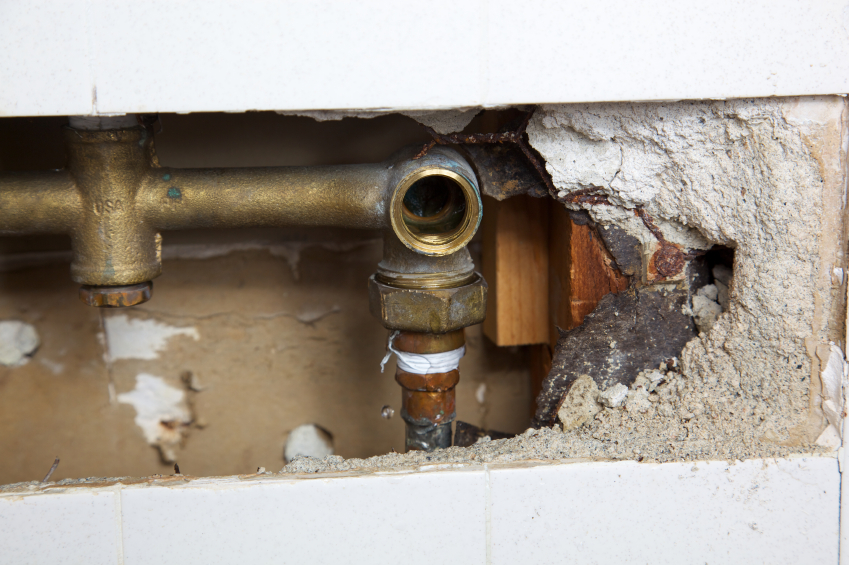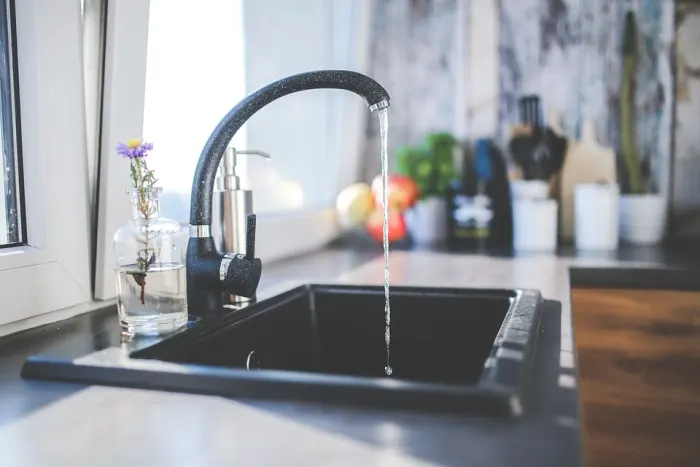Locating and Correcting Noisy Plumbing in Your Residence
Locating and Correcting Noisy Plumbing in Your Residence
Blog Article
Everyone has got their personal rationale when it comes to How To Fix Noisy Pipes.

To diagnose noisy plumbing, it is necessary to establish first whether the undesirable noises occur on the system's inlet side-in various other words, when water is turned on-or on the drainpipe side. Sounds on the inlet side have actually varied reasons: too much water stress, worn valve as well as tap parts, poorly linked pumps or other devices, improperly placed pipe bolts, and also plumbing runs including too many tight bends or other restrictions. Noises on the drainpipe side generally originate from bad location or, as with some inlet side sound, a design containing limited bends.
Hissing
Hissing noise that occurs when a tap is opened somewhat generally signals too much water pressure. Consult your neighborhood water company if you suspect this issue; it will have the ability to inform you the water stress in your location as well as can install a pressurereducing valve on the incoming water pipeline if necessary.
Thudding
Thudding sound, usually accompanied by shuddering pipelines, when a tap or home appliance valve is turned off is a problem called water hammer. The sound and also resonance are triggered by the reverberating wave of stress in the water, which unexpectedly has no place to go. Often opening up a valve that releases water rapidly right into a section of piping containing a constraint, joint, or tee installation can create the same problem.
Water hammer can normally be treated by installing installations called air chambers or shock absorbers in the plumbing to which the problem shutoffs or faucets are attached. These gadgets permit the shock wave produced by the halted circulation of water to dissipate in the air they contain, which (unlike water) is compressible.
Older plumbing systems may have brief vertical areas of capped pipeline behind wall surfaces on tap runs for the same objective; these can eventually loaded with water, minimizing or damaging their efficiency. The remedy is to drain pipes the water system completely by turning off the main water system valve and also opening up all faucets. After that open the primary supply shutoff as well as close the taps one at a time, beginning with the tap nearest the valve and also ending with the one farthest away.
Chattering or Screeching
Intense chattering or shrieking that occurs when a shutoff or tap is turned on, and that normally goes away when the installation is opened fully, signals loose or faulty interior parts. The service is to change the valve or faucet with a new one.
Pumps as well as home appliances such as washing equipments as well as dish washers can transfer electric motor sound to pipelines if they are improperly connected. Link such items to plumbing with plastic or rubber hoses-never inflexible pipe-to isolate them.
Various Other Inlet Side Noises
Squeaking, squeaking, scraping, snapping, and tapping typically are triggered by the growth or tightening of pipelines, normally copper ones providing hot water. The audios take place as the pipelines slide versus loose fasteners or strike nearby residence framing. You can typically identify the area of the trouble if the pipelines are subjected; simply adhere to the audio when the pipelines are making noise. More than likely you will discover a loosened pipe hanger or an area where pipes exist so close to floor joists or various other mounting pieces that they clatter versus them. Attaching foam pipeline insulation around the pipelines at the point of get in touch with must fix the issue. Make sure bands and wall mounts are protected as well as offer adequate support. Where feasible, pipeline fasteners ought to be affixed to huge structural elements such as foundation walls instead of to framing; doing so lessens the transmission of vibrations from plumbing to surface areas that can amplify and also move them. If connecting fasteners to framework is inescapable, wrap pipes with insulation or various other durable material where they contact bolts, and sandwich completions of new bolts between rubber washing machines when installing them.
Fixing plumbing runs that suffer from flow-restricting limited or many bends is a last resort that should be taken on only after consulting an experienced plumbing contractor. However, this circumstance is rather common in older houses that may not have been built with interior plumbing or that have actually seen a number of remodels, particularly by novices.
Drainpipe Noise
On the drain side of plumbing, the principal goals are to eliminate surface areas that can be struck by dropping or hurrying water and to protect pipelines to include inescapable sounds.
In brand-new building and construction, tubs, shower stalls, toilets, as well as wallmounted sinks and basins must be set on or against resilient underlayments to minimize the transmission of audio via them. Water-saving commodes and also faucets are much less loud than traditional versions; mount them rather than older kinds even if codes in your area still allow making use of older components.
Drains that do not run vertically to the cellar or that branch into straight pipe runs supported at flooring joists or other mounting existing specifically bothersome noise problems. Such pipelines are large enough to emit significant resonance; they also carry considerable amounts of water, that makes the circumstance worse. In brand-new building and construction, specify cast-iron soil pipes (the large pipes that drain pipes commodes) if you can manage them. Their massiveness has a lot of the noise made by water travelling through them. Additionally, stay clear of transmitting drainpipes in wall surfaces shared with bedrooms as well as rooms where individuals collect. Wall surfaces having drains must be soundproofed as was explained previously, utilizing double panels of sound-insulating fiber board and also wallboard. Pipes themselves can be wrapped with special fiberglass insulation created the function; such pipes have an invulnerable vinyl skin (in some cases consisting of lead). Outcomes are not constantly satisfying.
WHY IS MY PLUMBING MAKING SO MUCH NOISE?
This noise indeed sounds like someone is banging a hammer against your pipes! It happens when a faucet is opened, allowed to run for a bit, then quickly shut — causing the rushing water to slam against the shut-off valve.
To remedy this, you’ll need to check and refill your air chamber. Air chambers are filled with — you guessed it — air and help absorb the shock of moving water (that comes to a sudden stop). Over time, these chambers can fill with water, making them less effective.
You’ll want to turn off your home’s water supply, then open ALL faucets (from the bathroom sink to outdoor hose bib) to drain your pipes. Then, turn the water back on and hopefully the noise stops! If you’re still hearing the sound, give us a call to examine further.
Whistles
Whistling sounds can be frustrating, as sometimes the source isn’t easily identified. However, if you can pinpoint which faucet or valve that may be the cause, you’ll likely encounter a worn gasket or washer — an easy fix if you replace the worn parts!Whistling sounds from elsewhere can mean a number of things — from high water pressure to mineral deposits. Your best plan of attack here is to give our plumbing experts a call. We’ll be able to determine where the noise is coming from and what the cause may be, then recommend an effective fix!
Cracks or Ticks
Cracking or ticking typically comes from hot water going through cold, copper pipes. This causes the copper to expand resulting in a cracking or ticking sound. Once the pipes stop expanding, the noise should stop as well.
Pro tip: you may want to lower the temperature of your water heater to see if that helps lessen the sound, or wrapping the pipe in insulation can also help muffle the noise.
Bangs
Bangs typically come from water pressure that’s too high. To test for high water pressure, get a pressure gauge and attach it to your faucet. Water pressure should be no higher than 80 psi (pounds per square inch) and also no lower than 40 psi. If you find a number greater than 80 psi, then you’ve found your problem!
Next step is to give us a call in order to install a pressure regulator. Trust us, you don’t want to wait to resolve this issue. Not only is the sound annoying, but high water pressure can be destructive to your home — including damaging certain appliances, like your washer and dishwasher.
Dripping
You might be accustom to the slow quiet drip your kitchen faucet makes. You might have even tuned out your bathroom sink dripping and drabbing all day long — but it’s time to find its cause.
A slow drip could signify a variety of easy to fix issues, such as a worn out O ring, or loose part. And by ignoring the drip, you could be wasting up to 2,000 gallons of water a year! So start conserving water — get it looked at ASAP.
https://www.pwessig.com/blog/2018/december/why-is-my-plumbing-making-so-much-noise-/

We had been made aware of that article on How To Fix Noisy Pipes from an acquaintance on our other web blog. I beg you take the time to distribute this blog posting if you appreciated it. Thank you for your time invested reading it.
Schedule An Appointment Report this page